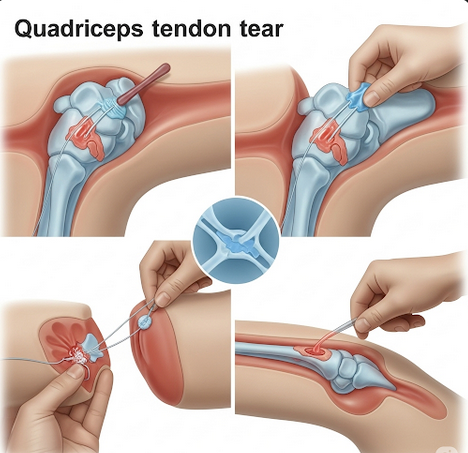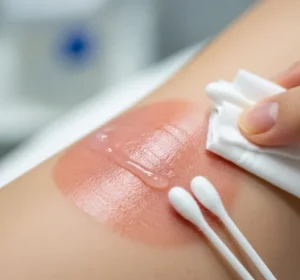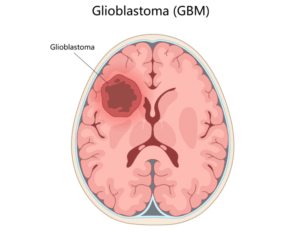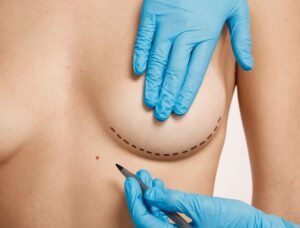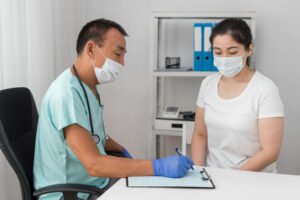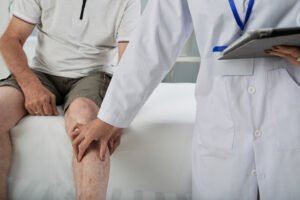Overview
A quadriceps tendon tear is a serious knee injury where the tendon connecting the quadriceps muscles to the kneecap (patella) is partially or completely ruptured. This injury can cause significant pain, loss of mobility, and inability to straighten the leg. It typically occurs due to a sudden, forceful load on the knee, often during sports, falls, or accidents.
What is a Quadriceps Tendon Tear?
The quadriceps tendon is a strong, fibrous tissue that connects the large muscles at the front of your thigh to the kneecap. This tendon works with the quadriceps muscles to straighten the knee. When it tears, the ability to extend the leg is impaired.
Tears can be:
- Partial: Only some fibers are damaged; the tendon is still intact.
- Complete: The tendon is fully ruptured, often requiring surgery.
Symptoms
- Sudden pain above the kneecap
- Swelling and bruising around the knee
- Difficulty walking or bearing weight
- A gap or indentation above the kneecap
- Inability to straighten the leg without assistance
- Kneecap that appears lower than normal (patella baja)
Causes
- Direct trauma to the front of the knee
- Sudden forceful load (e.g., jumping, sprinting, or stumbling)
- Falls where the knee is bent
- Degeneration from chronic overuse
- Medical conditions that weaken tendons (e.g., diabetes, rheumatoid arthritis)
Risk Factors
- Age over 40 (tendons weaken naturally with age)
- Engaging in high-impact sports
- Previous knee injuries or surgery
- Use of corticosteroid injections in the knee
- Chronic diseases such as diabetes, kidney failure, or hyperparathyroidism
Complications
- Permanent loss of knee strength or flexibility
- Chronic pain or instability
- Difficulty walking or climbing stairs
- Risk of re-tearing if rehabilitation is inadequate
- Post-surgical stiffness or scar tissue formation
Prevention
- Warm up properly before exercise
- Strengthen quadriceps and surrounding muscles
- Avoid sudden increases in workout intensity
- Use proper technique during sports and weightlifting
- Treat minor knee injuries promptly to prevent progression
Treatment Options – Korea
In Korea, quadriceps tendon tears are managed with world-class orthopedic care and advanced rehabilitation techniques:
Diagnosis
- Physical examination to assess leg extension ability
- MRI or ultrasound to confirm tear severity
Non-Surgical Treatment (Partial Tears)
- Immobilization with a knee brace or cast
- Physical therapy to restore strength and flexibility
- Anti-inflammatory medications for pain and swelling
Surgical Treatment (Complete Tears)
- Open surgical repair: Tendon is reattached to the kneecap using sutures or anchors
- Arthroscopy-assisted repair in specialized sports medicine centers
- Surgery is ideally performed within 1–2 weeks for best outcomes
Rehabilitation
- Intensive physiotherapy programs at Korean orthopedic rehab centers
- Gradual return to activities over 4–6 months
- Hydrotherapy, electrical stimulation, and robotic-assisted rehab in premium clinics in Seoul and Busan
Korea’s top orthopedic hospitals—such as Severance Hospital, Samsung Medical Center, and Asan Medical Center—are renowned for high success rates in tendon repair and accelerated recovery programs for athletes.

